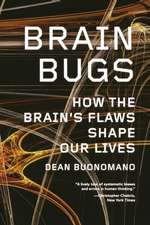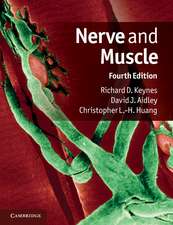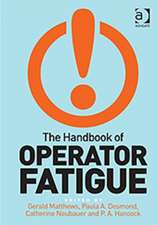Mediators and Drugs in Gastrointestinal Motility I: Morphological Basis and Neurophysiological Control: Handbook of Experimental Pharmacology, cartea 59 / 1
Contribuţii de H.G. Baumgartenen Limba Engleză Paperback – 23 noi 2011
Din seria Handbook of Experimental Pharmacology
- 5%
 Preț: 1425.04 lei
Preț: 1425.04 lei - 5%
 Preț: 907.42 lei
Preț: 907.42 lei - 5%
 Preț: 3458.24 lei
Preț: 3458.24 lei - 5%
 Preț: 730.30 lei
Preț: 730.30 lei - 5%
 Preț: 1401.89 lei
Preț: 1401.89 lei - 5%
 Preț: 1411.04 lei
Preț: 1411.04 lei - 5%
 Preț: 1406.37 lei
Preț: 1406.37 lei - 5%
 Preț: 1898.04 lei
Preț: 1898.04 lei - 5%
 Preț: 1889.97 lei
Preț: 1889.97 lei - 5%
 Preț: 1904.70 lei
Preț: 1904.70 lei - 5%
 Preț: 2081.76 lei
Preț: 2081.76 lei - 5%
 Preț: 2084.08 lei
Preț: 2084.08 lei - 5%
 Preț: 2081.56 lei
Preț: 2081.56 lei - 5%
 Preț: 1088.15 lei
Preț: 1088.15 lei - 5%
 Preț: 1079.75 lei
Preț: 1079.75 lei - 5%
 Preț: 1396.30 lei
Preț: 1396.30 lei - 5%
 Preț: 1086.19 lei
Preț: 1086.19 lei - 5%
 Preț: 1086.19 lei
Preț: 1086.19 lei - 5%
 Preț: 1089.45 lei
Preț: 1089.45 lei - 5%
 Preț: 1088.02 lei
Preț: 1088.02 lei - 5%
 Preț: 1087.12 lei
Preț: 1087.12 lei - 5%
 Preț: 1154.53 lei
Preț: 1154.53 lei - 5%
 Preț: 401.65 lei
Preț: 401.65 lei - 5%
 Preț: 402.75 lei
Preț: 402.75 lei - 5%
 Preț: 539.89 lei
Preț: 539.89 lei - 5%
 Preț: 708.34 lei
Preț: 708.34 lei - 5%
 Preț: 720.74 lei
Preț: 720.74 lei - 5%
 Preț: 718.96 lei
Preț: 718.96 lei - 5%
 Preț: 733.86 lei
Preț: 733.86 lei - 5%
 Preț: 735.13 lei
Preț: 735.13 lei - 5%
 Preț: 713.02 lei
Preț: 713.02 lei - 5%
 Preț: 730.29 lei
Preț: 730.29 lei - 5%
 Preț: 386.64 lei
Preț: 386.64 lei - 5%
 Preț: 723.29 lei
Preț: 723.29 lei - 5%
 Preț: 716.07 lei
Preț: 716.07 lei - 5%
 Preț: 382.99 lei
Preț: 382.99 lei - 5%
 Preț: 718.41 lei
Preț: 718.41 lei - 5%
 Preț: 728.11 lei
Preț: 728.11 lei - 5%
 Preț: 717.90 lei
Preț: 717.90 lei - 5%
 Preț: 711.23 lei
Preț: 711.23 lei - 5%
 Preț: 718.96 lei
Preț: 718.96 lei - 5%
 Preț: 714.44 lei
Preț: 714.44 lei - 5%
 Preț: 3456.98 lei
Preț: 3456.98 lei - 5%
 Preț: 716.98 lei
Preț: 716.98 lei - 5%
 Preț: 724.70 lei
Preț: 724.70 lei - 5%
 Preț: 718.61 lei
Preț: 718.61 lei - 5%
 Preț: 726.33 lei
Preț: 726.33 lei - 5%
 Preț: 894.59 lei
Preț: 894.59 lei - 5%
 Preț: 707.97 lei
Preț: 707.97 lei
Preț: 718.24 lei
Preț vechi: 756.04 lei
-5% Nou
Puncte Express: 1077
Preț estimativ în valută:
137.52€ • 143.20$ • 114.10£
137.52€ • 143.20$ • 114.10£
Carte tipărită la comandă
Livrare economică 13-27 februarie
Preluare comenzi: 021 569.72.76
Specificații
ISBN-13: 9783642684395
ISBN-10: 3642684394
Pagini: 496
Ilustrații: XX, 470 p.
Dimensiuni: 170 x 244 x 26 mm
Greutate: 0.79 kg
Ediția:Softcover reprint of the original 1st ed. 1982
Editura: Springer Berlin, Heidelberg
Colecția Springer
Seria Handbook of Experimental Pharmacology
Locul publicării:Berlin, Heidelberg, Germany
ISBN-10: 3642684394
Pagini: 496
Ilustrații: XX, 470 p.
Dimensiuni: 170 x 244 x 26 mm
Greutate: 0.79 kg
Ediția:Softcover reprint of the original 1st ed. 1982
Editura: Springer Berlin, Heidelberg
Colecția Springer
Seria Handbook of Experimental Pharmacology
Locul publicării:Berlin, Heidelberg, Germany
Public țintă
ResearchCuprins
1 Historical Perspective.- 2 Morphological Basis of Gastrointestinal Motility: Structure and Innervation of Gastrointestinal Tract.- A. Introduction.- B. Structure of Smooth Muscle.- C. Innervation of Gastrointestinal Smooth Muscle.- D. Integration of Extrinsic and Intrinsic Neurons into Reflex Circuits.- E. Conclusions.- References.- 3 Morphological Basis of Gastrointestinal Motility: Ultrastructure and Histochemistry of Endocrine-Paracrine Cells in the Gut.- A. General Cytology and Physiology.- B. Classification and Description of Cell Types.- C. Pathology.- D. Summary.- References.- 4 Ionic Basis of Smooth Muscle Action Potentials.- A. Introduction.- B. Methodologic Problems.- C. Effects of Na Ions.- D. Effects of Tetrodotoxin.- E. Na-Dependent Activity in Ca-Free Solution.- F. Effects of Ca Ions.- G. Regulation of Intracellular Ca.- H. Effects of Intracellular Ca.- I. Effects of Decreasing K Conductance.- K. Effects of Membrane Polarization.- L. Effects of Ca Antagonists.- M. General Properties of Spikes and Their Implications.- N. Summary.- References.- 5 Electrophysiology of Intestinal Smooth Muscle.- A. Introduction.- B. Methods Used In Electrical Recording.- C. Electrical Activity of Gastrointestinal Smooth Muscle.- D. Relationship Between Electrical and Mechanical Activity.- E. Migrating Myoelectric Complex.- F. Electromyography in Clinical Practice.- References.- 6 Electrophysiology of the Enteric Neurons.- A. Introduction.- B. Extracellular Recording Techniques.- C. Intracellular Recording Techniques.- D. Actions of Endogenous and Exogenous Substances on Enteric Neurons.- E. Functional Roles of Enteric Neurons in the Control of Gastrointestinal Motility.- References.- 7 In Vivo Techniques for the Study of Gastrointestinal Motility.- A. Introduction.- B. Techniques for the Study of Wall Movements.- C. Techniques for the Study of Intraluminal Pressure.- D. Techniqes for the Study of Transit of Contents.- E. Use of Combined Techniques.- References.- 8 In Vitro Techniques for the Study of Gastrointestinal Motility.- A. Introduction.- B. General Methodology.- C. Muscle Segments and Strips.- D. Gastric Motility.- E. Intestinal Peristalsis.- F. Effects of Stretch on Muscle Strips.- G. Electrical Stimulation of Autonomic Nerves.- H. Conclusions.- References.- 9 Nervous Control of Esophageal and Gastric Motility.- A. Nervous Control of the Esophagus.- B. Nervous Control of the Stomach.- References.- 10 Nervous Control of Intestinal Motility.- A. Introduction.- B. Neuromuscular Transmission in the Intestine.- C. Transmission and Pathways in Enteric Ganglia.- D. Initiation of Sensory Inputs in the Intestine.- E. Electrical Stimulation of Extrinsic Nerves.- F. Conclusions on Neuromuscular and Ganglionic Transmission in the Intestine.- G. Patterns of Motility of the Intestine.- H. Nervous Control of Intestinal Motility.- J. Role of Intrinsic Nerves in the Pattern of Intestinal Motility in the Freely Fed State.- K. Extrinsic Intestinal (Intestinointestinal) Reflexes.- L. General Summary and Conclusions.- References.- Note Added in Proof.- 11 Identification of Gastrointestinal Neurotransmitters.- A. Criteria for Transmitter Identification and Their Application to the Intestine.- B. Evidence that a Number of Different Neurotransmitters are Released in the Gastrointestinal Tract.- C. Identification of Acetylcholine as an Intestinal Transmitter.- D. Noradrenaline as an Intestinal Transmitter.- E. Evidence For and Against 5-Hydroxytryptamine.- F. Evidence For and Against Dopamine.- G. Evidence that ?-Aminobutyric Acid is a Neurotransmitterin the Intestine.- H. Identification of the Transmitter Released from Enteric Inhibitory Nerves.- J. Peptides as Intestinal Transmitters.- K. Summary.- Note Added in Proof.- References.

















